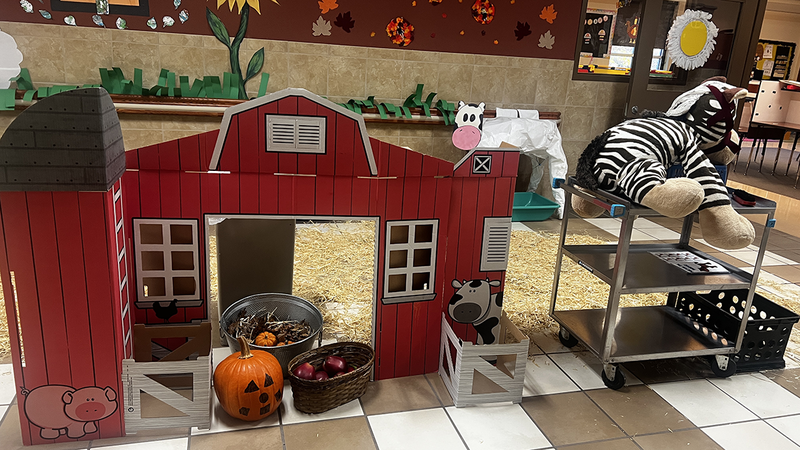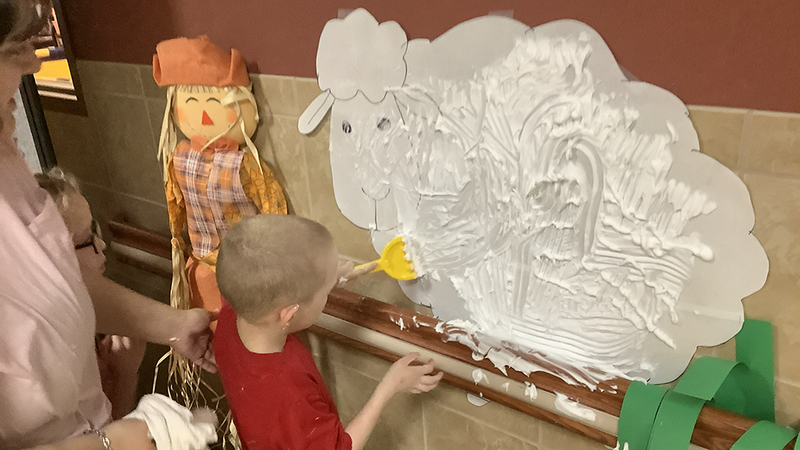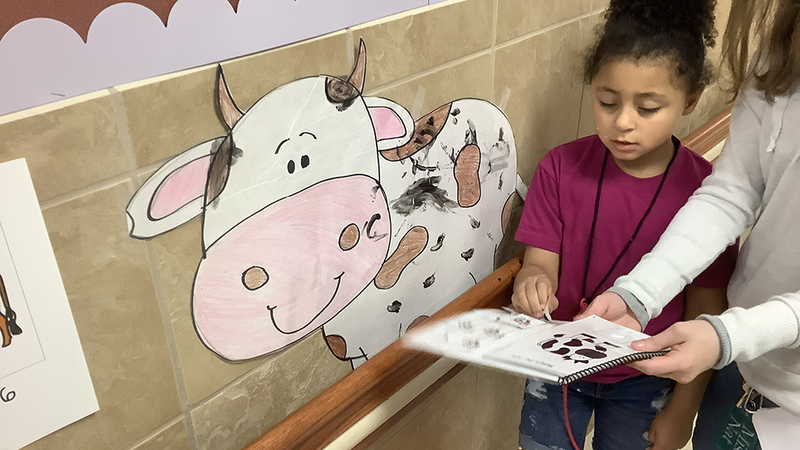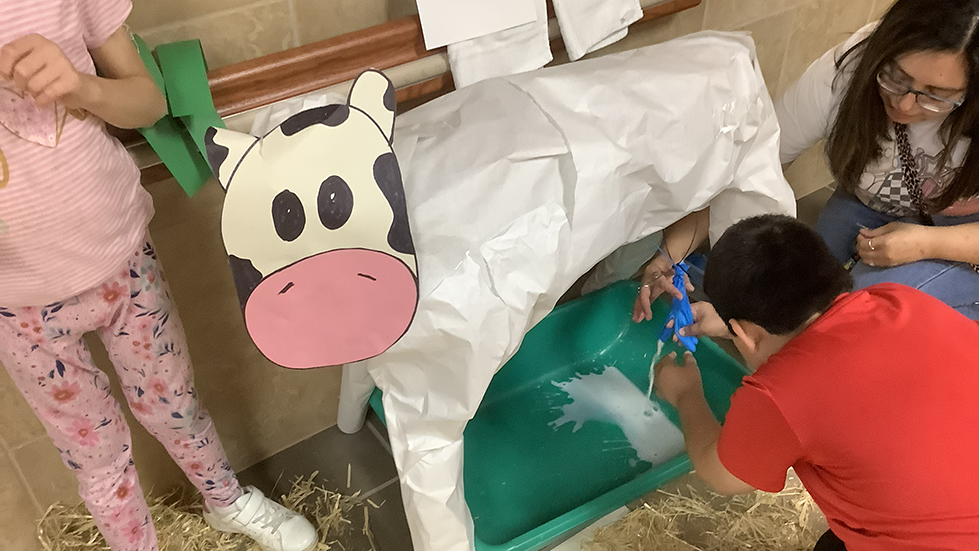Elementary students at the Wayne D. Boshears Center are continuing their farm-to-table learning unit with an engaging, hands-on “animal farm” simulation designed to support functional learning in vocabulary, math concepts, matching, sequencing, and following visual instructions. As part of this ongoing lesson, the elementary teaching team collaborated to design and set up interactive sensory stations, working together to create meaningful, accessible experiences that bring farm concepts to life for every learner.

Students explored a variety of simulated farm activities that encouraged communication, sensory engagement, and independence. They practiced “shearing a sheep” using shaving cream to mimic the shearing process and guided “pigs” through a muddy landscape made from pudding. A paper-mâché cow fitted with gloves gave students the opportunity to practice milking, while grooming tools allowed them to brush a “horse” and pretend to feed it hay. Students also counted chicken eggs and placed them into cartons and used paint to simulate and count markings on cows. Each activity was intentionally designed to support life-skills development, fine motor practice, and hands-on learning.


Teachers shared that the collaborative effort strengthened the experience and helped reinforce students’ understanding of the farm-to-table process. “Our students had a great time exploring the world of farm animals and discovering where their food comes from!” said teacher Anita Lewis. “We were thrilled to create an engaging, hands-on experience that allowed them to interact with simulated farm activities here at the Boshears Center.”


Teacher Natalie Parnell added, “This activity reinforced all the farm animal knowledge students have been learning in the classroom. From the fun of ‘shearing a sheep’ with shaving cream to the excitement of brushing and feeding a ‘horse,’ the day has been filled with sensory experiences and has been memorable for everyone.”

